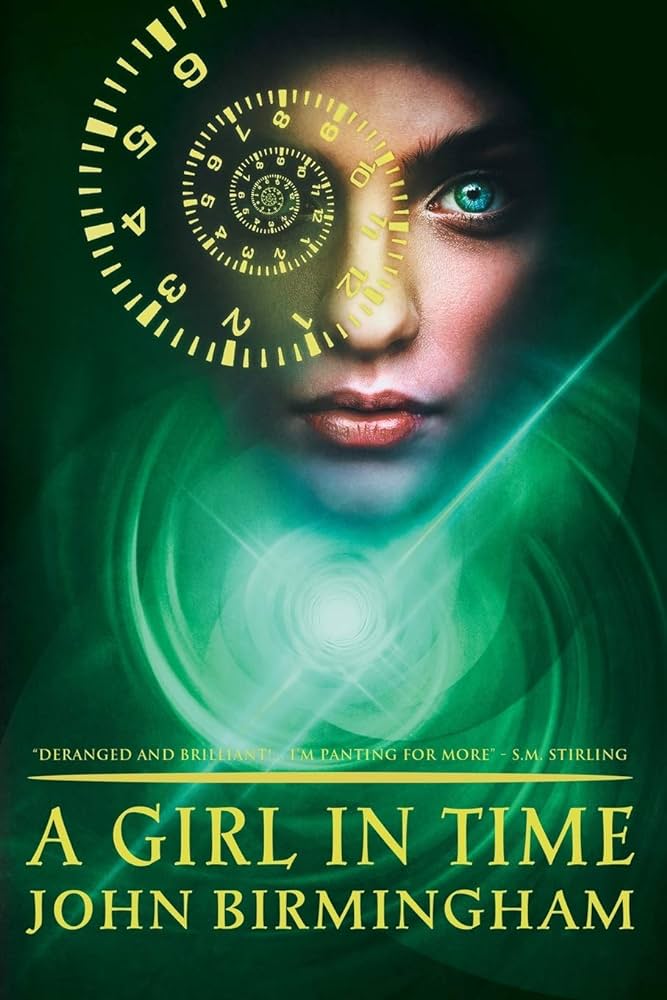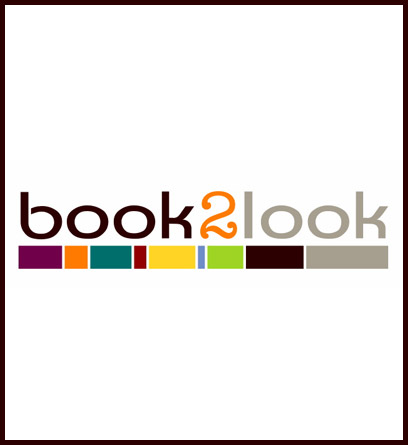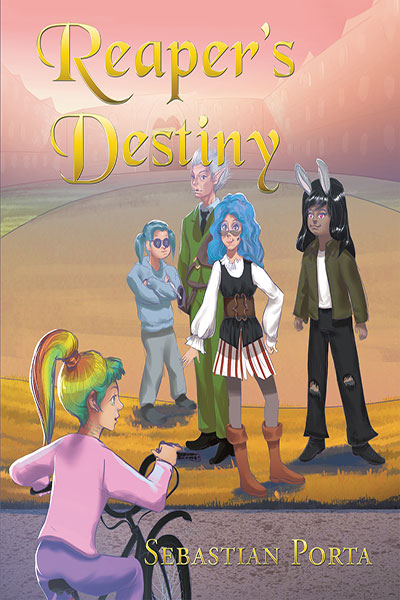This article, by then-editors of Books+Publishing Jackie Tang and Andrea Hanke, was first published by Independent Publishing in 2017.
John Birmingham’s self-published novel A Girl in Time—the first in a near-future, dystopian series that imagines the US under a Trump presidency—was released in December last year.
The author of bestsellers such as He Died with a Felafel in His Hand and the ‘Axis of Time’ trilogy said he came to self-publishing after a previous series ‘tanked for a bunch of reasons I won’t get into’, and suddenly his options for publishing narrowed.
‘I’d been thinking about it for a couple of years, but my agent had always advised me against it,’ he said. ‘For a few years there, trade publishers were so hostile to the whole thing that there was a good chance of being cut from their list if you ventured out on your own.’ Now, his only regret is not jumping years earlier. ‘Seriously. I wish I’d done this about five years ago.’
Birmingham spent six months studying the self-publishing field and learning from the community of indie writers, some of whom had published self-help guides. There were also dozens of podcasts and hundreds of blogs and websites on the subject. ‘After six months, I felt like I’d done a post-grad degree in self-publishing. It was hugely helpful.’
Birmingham’s next step was to take a couple of novellas he’d written for his trade publishers and put them out himself, applying the lessons he’d learned. ‘The whole process worked exactly as advertised,’ he said. ‘Best of all, it was entirely transparent. I knew when I’d sold a book within an hour, at most a day, and sixty days later that money dropped into my bank account. It was a thousand miles removed from the opaque mystery of publisher accounting. All of a sudden, I had an actual business that I could run as a business, because I controlled and understood every step of the process.’
The biggest challenge, said Birmingham, was being responsible for everything. ‘So when my cover artist has a problem that needs fixing right away, I’m on email at four in the morning because he lives in Dublin.’
Birmingham said his experience as a traditionally published author helped him to understand the importance of editing and pre-production. ‘There can be no skimping there. If you don’t invest in editing, proofing, art, layout and so on, it will show and you’ll lose sales.’
‘Having said that, I also understood my own writing well enough after being edited for so long that I could choose where to concentrate my resources. In my case, that meant more on copyediting than structural.’
Birmingham originally released A Girl in Time as ebook-only, but has since engaged NewSouth Books to do some small print runs and distribution. ‘I work with them as my conventional nonfiction publisher [NewSouth published How to Be a Writer] and they’re great. If I can make the sums work on a print run, I’d be happy to give them that business, too. For now, however, I just do print on demand for my longer indie titles, Girl and Stalin’s Hammer.’
When asked whether he thinks trade publishers still bear ‘ill feelings’ towards indie publishers, Birmingham said: ‘Honestly, yes. Although a couple of indie authors have been gathered up by trade publishers with great success on both sides, mostly the trade sees the indie writer as a vanity published loser. They look at the vast numbers of genuinely awful books being published by indies and dismiss the entire sector as hapless jokes. But of course, trade puts out its own share of terrible shit, and the best of the indie writers are getting better with every release.’
Self-portrait
There was no particular trigger that led cartoonist and children’s book creator Judy Horacek to self-publishing. ‘I’ve always worked freelance, and that involves a fair bit of DIY in terms of getting work out there—finding new places to put cartoons. So self-publishing fits well with the way I’ve always gone about things,’ she said.
Horacek’s previous cartoon book, If You Can’t Stand the Heat, was published by Scribe in 2010. ‘I’d accrued a lot of new work since then, and it seemed to be high time for a new book. I thought now might be a good time to see what it was like to have total control.’
Horacek described her experience of self-publishing Random Life, which is due out in July, in one word: busy. ‘It is quite overwhelming to be responsible for absolutely everything yourself, from the tiniest speck on the manuscript to the raison d’être of the entire book.’
‘The designer of Random Life, Fiona Edge, who is also a friend, was an amazing help with managing the whole project, but there was no getting away from the fact that Judy was having to tell Judy she had to meet some deadline or other so that Judy could get on with the next bit to allow Judy to do something else.’
Horacek said she loved being able to change her mind about things along the way. ‘The craziest example of this is that about a fortnight before it was due at the printers, the final choice of cartoons was all seeming a bit squeezed, and I decided the book should have an extra 32 pages. I had more cartoons; why not use them? Now the book is a lovely, chunky 256 pages, with over 230 cartoons.’
The project began as a crowdfunding campaign, which meant that Horacek had already pre-sold a lot of copies before the book went to print. She said it gave her not only the funds to create the book but also the confidence to continue—‘because people were excited by the idea of a new Horacek cartoon book’.
Her plans for distribution, she admits, were initially vague—‘along the lines of doing a smallish print run and distributing the books myself to the bookshops I knew’. ‘But as things progressed, it became obvious my distribution plan wasn’t ideal, and someone suggested that I talk to Black Inc. I hadn’t known that they distribute books published by other people, as well as their own wonderful publications, and it seemed like a brilliant fit. I was delighted when they took Random Life under their wing.’
Horacek—who has 16 traditionally published cartoon and picture books under her belt—said she could not have produced Random Life without all her industry experience, but still found herself on a ‘steep learning curve’. ‘There are so many details to be on top of, and so many different deadlines to meet,’ she said. ‘I’ve always loved working with editors—it’s such a treat to have someone working alongside you to make the book the best it can be—I missed having that. That said, I think I did quite a good job of it myself.’
Whether Horacek continues on the hybrid path is still up in the air. ‘I definitely don’t want to stop publishing with proper publishers,’ she said. ‘I think my picture books will always be done through mainstream publishers. At this stage, my next cartoon book could go either way.’
Playing the field
Bestselling romance author Kylie Scott is one of several traditionally published Australian authors making the leap into self-publishing YA, with new titles from Ellie Marney and Alison Croggon also in the works.
Scott, whose previous books including the Stage Dive and Dive Bar adult romance series (Macmillan), will be releasing her first YA/new-adult novel, Trust, in print and digital formats in mid-July, after her publisher turned it down.
‘I was always interested in self-publishing, and since this isn’t part of an existing series, this was a good opportunity to try it out,’ said Scott. ‘I wanted to write the story that was speaking to me, and it just happened to be YA. But it involves more somewhat descriptive sex than the average YA, and explores universal themes that adults can relate to, so I’m confident adult readers will enjoy the read, too.’
Scott said the most rewarding part of self-publishing is having complete control over everything. But it can also be the most challenging. ‘Any mistakes rest solely with me,’ she observed. Before embarking on the experience, Scott sought advice from fellow authors; her agent, Amy Tannenbaum from Jane Rotrosen Agency; and former Momentum publisher Joel Naoum, who now runs Critical Mass, a consultancy for authors, publishers and content producers.
Scott said she envisions a hybrid career. ‘I enjoy traditional publishing and plan to continue that partnership, but self-publishing offers an element of freedom that I also enjoy’, including ‘the ability to release [a book] quickly and pick my own price’.
Advice to authors considering a hybrid model
- ‘Do your research. Seriously. Spend six months studying the field. Reading the books and blogs. Listening to the podcasts. For example: The Bestseller Experiment and Mark Dawson’s Self Publishing Formula Podcast.’—John Birmingham
- ‘Make sure you already know something about the making of books and about publishing. Create a detailed timeline with (as much as possible) absolutely everything in it, and try to make sure you stick to it. Most particularly, find good people to work with who can fill in the gaps in your skills, knowledge and experience, and who are happy to answer lots of questions, especially the dumb ones.’
—Judy Horacek - ‘It’s a business—treat the process just as a publishing house would. Hire professional editors, cover designers, publicists, etc.’—Kylie Scott





